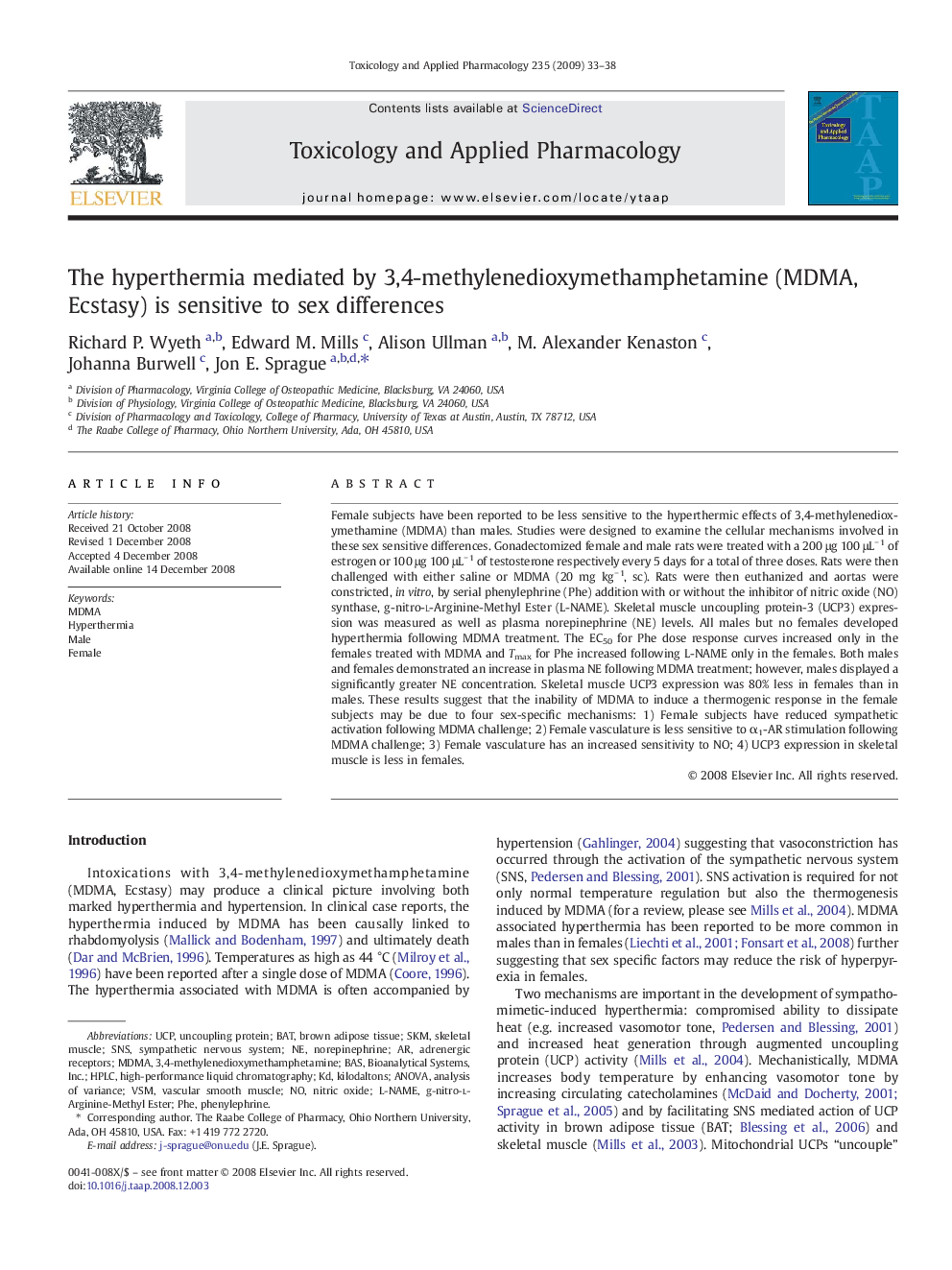| کد مقاله | کد نشریه | سال انتشار | مقاله انگلیسی | نسخه تمام متن |
|---|---|---|---|---|
| 2570148 | 1128571 | 2009 | 6 صفحه PDF | دانلود رایگان |

Female subjects have been reported to be less sensitive to the hyperthermic effects of 3,4-methylenedioxymethamine (MDMA) than males. Studies were designed to examine the cellular mechanisms involved in these sex sensitive differences. Gonadectomized female and male rats were treated with a 200 μg 100 μL− 1 of estrogen or 100 μg 100 μL− 1 of testosterone respectively every 5 days for a total of three doses. Rats were then challenged with either saline or MDMA (20 mg kg− 1, sc). Rats were then euthanized and aortas were constricted, in vitro, by serial phenylephrine (Phe) addition with or without the inhibitor of nitric oxide (NO) synthase, g-nitro-l-Arginine-Methyl Ester (L-NAME). Skeletal muscle uncoupling protein-3 (UCP3) expression was measured as well as plasma norepinephrine (NE) levels. All males but no females developed hyperthermia following MDMA treatment. The EC50 for Phe dose response curves increased only in the females treated with MDMA and Tmax for Phe increased following L-NAME only in the females. Both males and females demonstrated an increase in plasma NE following MDMA treatment; however, males displayed a significantly greater NE concentration. Skeletal muscle UCP3 expression was 80% less in females than in males. These results suggest that the inability of MDMA to induce a thermogenic response in the female subjects may be due to four sex-specific mechanisms: 1) Female subjects have reduced sympathetic activation following MDMA challenge; 2) Female vasculature is less sensitive to α1-AR stimulation following MDMA challenge; 3) Female vasculature has an increased sensitivity to NO; 4) UCP3 expression in skeletal muscle is less in females.
Journal: Toxicology and Applied Pharmacology - Volume 235, Issue 1, 15 February 2009, Pages 33–38